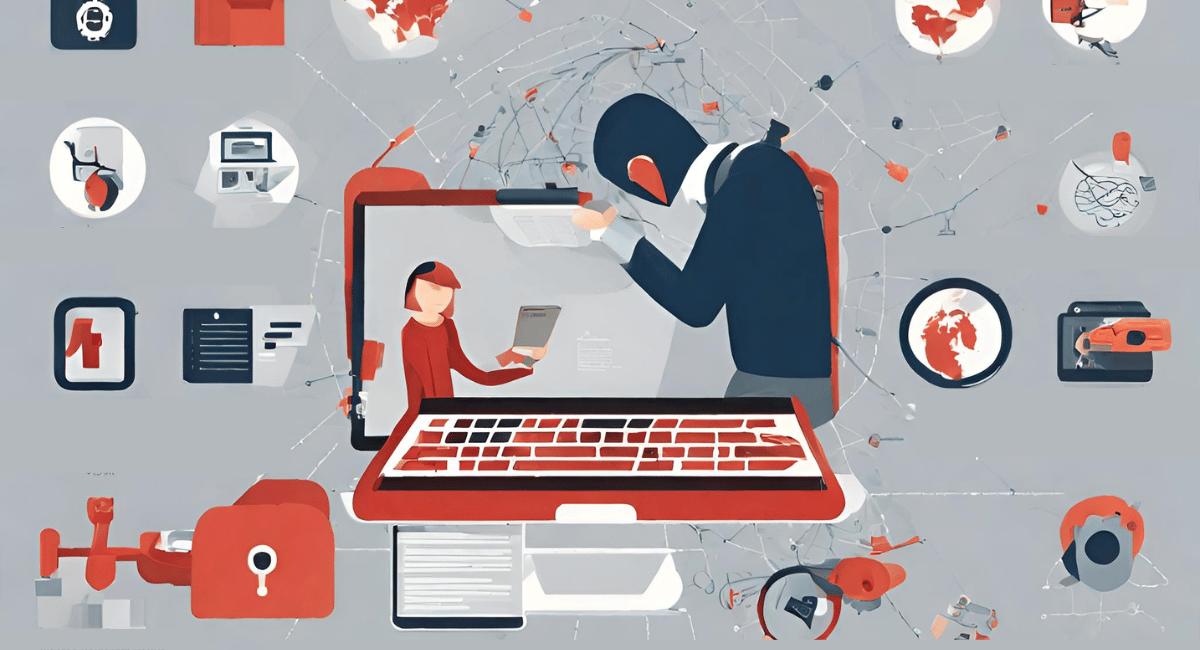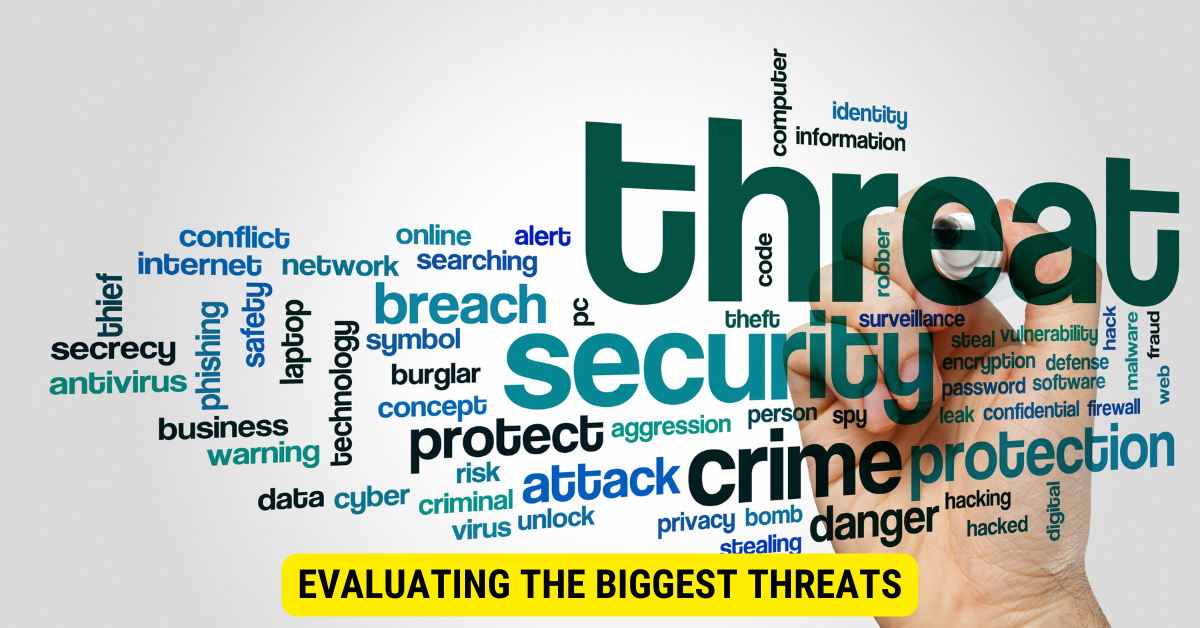The biggest data security threats are human error, sophisticated cyber attackers, and insider threats.
In today’s digital stage, protecting sensitive data has become a paramount concern for individuals, organizations, and governments. As technology advances, so do the threats that target valuable information. Therefore, understanding the various data security threats is crucial to implementing effective measures and safeguarding data from potential breaches. We will discover different types of data security threats, evaluate their impact and frequency, discuss best practices for data security, and shed light on emerging threats and future predictions.
Understanding Data-Security Threats

Definition of Data-Security Threats

Data security threats encompass various malicious activities and vulnerabilities that put sensitive data at risk. These threats can originate from external and internal sources, targeting various forms of data, including personal, financial, and intellectual property.
One common type of data security threat is a cyber attack, where hackers exploit vulnerabilities in computer systems to gain illegal access to sensitive data. These attacks can take many forms, such as malware infections, phishing scams, or denial-of-service attacks. Cybercriminals constantly evolve their tactics, making it crucial for organizations to stay modernized with the latest security measures.
Another data-security threat is insider threats, which involve employees or individuals with authorized access to sensitive data intentionally or unintentionally causing harm. This can include actions such as data theft, unauthorized sharing of information, or negligence in following security protocols. Organizations must implement strict access controls and regularly monitor employee activities to mitigate the risk of insider threats.
The Importance of Data Security
The importance of data security cannot be overstated. Data breaches can lead to severe financial losses, reputational damage, and legal consequences. Moreover, with the increasing reliance on interconnected systems and the digitization of sensitive information, the potential impact of data breaches has grown exponentially.
Monetary losses resulting from data breaches can be staggering. Organizations may face significant costs in investigating and remedying the breach, as well as potential fines and legal fees. Additionally, there is the risk of lawsuits from affected individuals or regulatory bodies, which can further drain financial resources.
Reputational damage is another significant consequence of data breaches. When customer data is compromised, organizations lose the trust and confidence of their clients. This can lead to declining client loyalty, decreased sales, and a damaged brand image. Rebuilding trust after a data breach can be a challenging and time-consuming process.
Furthermore, data breaches can have long-lasting legal consequences. Depending on the nature of the breached data and applicable laws, organizations may be required to inform affected individuals, regulators, and law enforcement agencies. Failure to obey data breach notification laws can result in additional penalties and legal actions.
Given the potential impact of data breaches, organizations must prioritize data security measures. This includes implementing robust security protocols, regularly updating and patching systems, conducting thorough risk assessments, and providing comprehensive training to employees on data security best practices.
Types of Data-Security Threats
Data security threats constantly evolve, and personalities and organizations must stay informed and prepared. Let’s explore some of the most common and persistent threats to data security.
Malware and Viruses
Malware and viruses remain one of the most prevalent and damaging data-security threats. These malicious software programs are planned to infiltrate systems, compromise data integrity, and extract sensitive information without authorization. From ransomware that encrypts files and demands payment to trojans that steal login credentials, malware constantly threatens data security.
One particularly notorious form of malware is ransomware. This type of malware encodes files on a victim’s computer, rendering them unreachable until a ransom is paid. The rise of ransomware attacks has caused significant financial losses and disruptions for individuals and organizations.
Another form of malware is spyware, which secretly monitors a user’s activities and collects sensitive information. This information can be used for malicious purposes, such as character theft or financial fraud.
Phishing Attacks
Phishing attacks involve deceptive tactics to trick individuals into revealing sensitive info, such as login credentials or financial details. Cybercriminals employ various techniques to exploit human psychology and appear as legitimate entities, making identifying and avoiding these attacks challenging.
One common form of phishing attack is through email. Cybercriminals send carefully crafted emails that appear to be from reputable organizations, such as banks or online retailers. These emails often contain urgent requests for personal information or ask recipients to click on malicious links.
Phishing attacks have become increasingly sophisticated over time. Cybercriminals now use advanced social engineering techniques to create highly convincing emails and websites. These attacks can have severe consequences, leading to identity theft, financial loss, and reputational damage.
Insider Threats
While external threats often receive more attention, insider threats can be equally damaging to data security. Insiders with official access to systems and data may intentionally or accidentally misuse their privileges, leading to data breaches.
One example of an insider threat is a disgruntled employee who leaks confidential information. This can occur when an employee feels mistreated or seeks revenge against their employer. The leaked information can be sold to competitors or made public, causing significant harm to the organization.
Another example is when employees fall victim to social engineering schemes. Cybercriminals may exploit the trust and naivety of staff to gain unauthorized access to sensitive data. This can happen through phishing emails, phone calls, or even in-person manipulation.
Organizations must implement robust security measures and educate their employees about the risks of insider threats. This includes regular training, access controls, and monitoring systems to detect suspicious activities.
As technology continues to advance, new data security threats will emerge. Individuals and administrations must stay proactive, continuously update their security measures, and know the latest threats and best performances.
Evaluating the Biggest Threats

When it comes to data security threats, understanding their impact is crucial in determining their significance. One of the most common threats is malware, which can have far-reaching consequences. A malware attack can result in financial losses and operational disruptions for businesses. It can also lead to long-term reputational damage, as customers may lose trust in an organization compromised by malware. The effects of a successful malware attack can be devastating and may take a significant amount of time and resources to recover from.
Another significant threat is phishing. While it may not have the same immediate impact as a malware attack, a successful phishing attack can still cause serious harm. Phishing attacks often target vulnerabilities in human behavior, exploiting individuals’ trust and naivety. The consequences of an effective phishing attack can include compromised user accounts and potential identity theft. This can have severe implications for individuals and organizations, as sensitive information may be exposed and misused.
The Impact of Different Threats
Understanding the impact of different data security threats is crucial in determining their significance. The consequences of a malware attack, for instance, can range from financial losses and operational disruptions to long-term reputational damage and customer distrust. On the other hand, a successful phishing attack may lead to compromised user accounts and potential identity theft.
It is important to note that the impact of these threats can vary depending on the specific circumstances. For example, a small business may be more vulnerable to financial losses caused by a malware attack than a larger corporation with robust security measures. Similarly, individuals who fall victim to a phishing attack may experience significant personal and financial consequences.
Therefore, organizations and individuals must be proactive in implementing effective security measures to mitigate the impact of these threats. This includes regularly updating and patching software, educating employees and users about potential risks, and implementing multi-factor authentication to protect against unauthorized access.
Frequency of Threat Types
The frequency of different threat types varies, influenced by factors such as evolving technologies, cybersecurity awareness, and attackers’ motivations. While malware attacks constantly evolve with new strains and techniques, phishing attacks often target vulnerabilities in human behavior. Data security measures can effectively prioritize and allocate resources by analyzing the frequency and patterns of various threats.
Malware attacks have become increasingly sophisticated, with cybercriminals developing new techniques to bypass security measures. This constant evolution makes it challenging for organizations to keep up and protect their systems effectively. It requires continuous monitoring, threat intelligence, and proactive measures to detect and prevent malware attacks.
On the other hand, phishing attacks rely on social engineering tactics to deceive individuals into divulging sensitive information. These attacks often exploit human psychology, using trust, urgency, or fear to manipulate victims. Cybercriminals may impersonate trusted entities, such as banks or popular online platforms, to trick individuals into clicking on malicious links or providing their login credentials.
Organizations can better allocate their resources and implement appropriate security measures by understanding the frequency and patterns of these different threat types. This includes investing in robust email filtering systems to detect and block phishing attempts, conducting regular security awareness training for employees, and implementing strong authentication protocols to protect against unauthorized access.
Mitigating Data-Security Threats
Best Practices for Data Security
Implementing best practices for data security is crucial in reducing the risk of breaches. Regularly updating software and operating systems, using strong and unique passwords, encrypting sensitive information, and backing up data can significantly enhance overall security posture.
The Role of Technology in Data Security
Technology plays a dynamic role in data security. Progressive security solutions, such as firewalls, intrusion detection systems, and antivirus software, help detect and mitigate potential threats. Encryption protocols, secure communication channels, and multi-factor authentication help safeguard data during transmission and storage.
The Future of Data-Security Threats
Emerging Threats in Data Security
As technology advances, so do the fears that target data security. Emerging threats include artificial intelligence-enabled attacks, IoT vulnerabilities, and targeted attacks on critical infrastructure. Staying informed about these emerging threats is crucial in adapting security measures to mitigate new risks.
Predictions for Data Security in the Coming Years
Looking ahead, it is clear that data security threats will continue to evolve. New vulnerabilities will emerge with the rise of technologies like quantum computing and the increasing interconnectedness of devices. Therefore, individuals and organizations must prioritize data security, establish robust defense mechanisms, and regularly update security practices to stay one step ahead of potential threats.
Key Takeaways
- Human error, like falling for phishing scams, is a significant threat.
- Advanced persistent threats (APTs) are sophisticated and can infiltrate systems undetected.
- Insider threats, intentional or unintentional, pose severe risks.
- Ransomware attacks are on the rise, locking data and demanding payment.
- Unpatched and outdated software can be vulnerabilities.
FAQs
Q: How can organizations protect against human errors?
A: Through regular training, awareness campaigns, and multi-factor authentication.
Q: What’s an example of an insider threat?
A: A disgruntled employee stealing or compromising company data.
Q: Are small businesses at risk too?
A: Yes, often more so, as they may lack robust security measures.
Q: How can ransomware attacks be prevented?
A: Regular backups, updating software, and educating users about email attachments and links.
Q: Are physical threats (like theft) still relevant?
A: Yes, physical access can compromise even the best digital security.
Conclusion
In conclusion, the question of who or what is the biggest data-security threat cannot be answered with a single entity or factor. Data security threats encompass a multitude of external and internal risks that continuously evolve and adapt. By understanding the various types of threats, evaluating their impact and frequency, implementing best practices, and staying informed about emerging threats, individuals and organizations can safeguard data and mitigate potential risks in an increasingly interconnected world.
